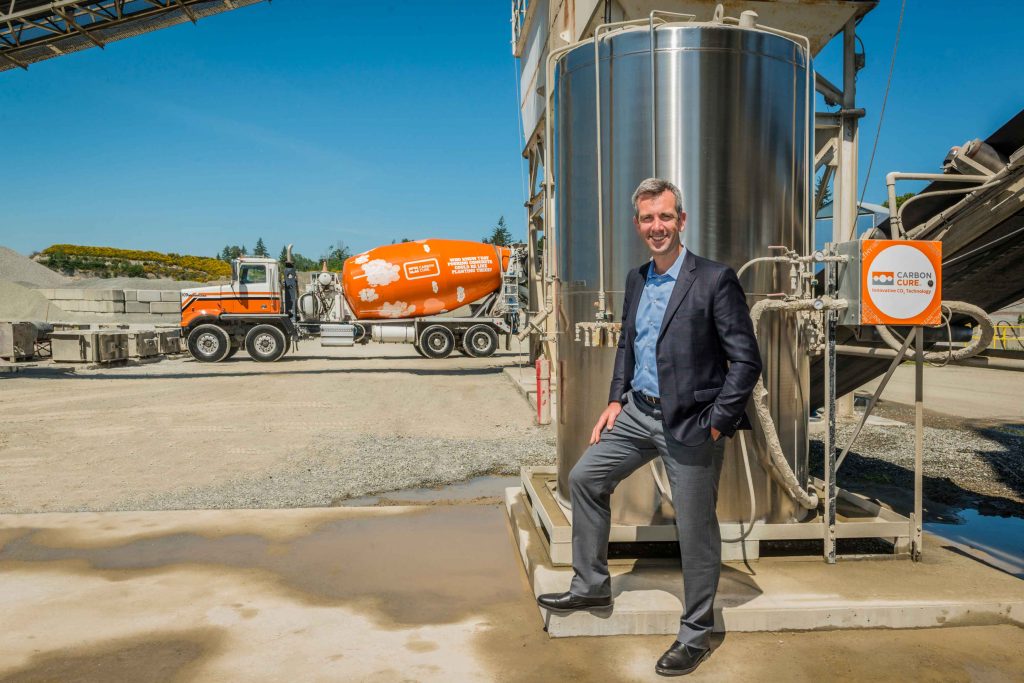Canadian cleantech is ready for lift off.
Despite our modest size, Canada is emerging as a global leader in clean technology and innovation: we were ranked fourth on the Global Cleantech Innovation Index 2017 and 12 Canadian companies were selected for the 2020 Global Cleantech 100. Almost 500 pureplay cleantech companies call Canada home, according to recent research by Natural Resources Canada (NRCan) and MaRS presented at GLOBE 2020, and this doesn’t account for the corporate entities in Canada who are working to innovate, develop, and deploy cleantech solutions within their own operations.
The cleantech industry is growing, but it is far from mature. NRCan and MaRS researchers found 70 per cent of pureplay ventures are under 10 years old, with Technology Readiness Level (TRL) 7 being a notable valley of death for many companies.
“Good ideas are getting early-stage funding. The big barriers are around the capital needed to scale-up their technologies and finding the customers needed to deploy,” says Steve MacDonald, CEO of Emissions Reduction Alberta (ERA).
Amidst these challenges, ERA has emerged as a leader in shepherding ventures to commercialization. The not-for-profit organization was established in 2009 to invest the funds generated by Alberta’s carbon pricing system into solutions that reduce greenhouse gases (GHGs), lower costs, attract investment, and create jobs in Alberta.
“When it comes to scale up, ERA does it better than anyone in Canada,” says Robert Niven, CEO and Founder, CarbonCure Technologies.
CarbonCure has a bold mission: to reduce 500 megatonnes of CO2 emissions annually by making CO2 removal technology the standard for concrete production across the globe.
When CarbonCure applied for ERA’s Grand Challenge—a multi-year funding competition seeking out innovative technologies that turn CO2 emissions from a waste stream into valuable products—it was growing in other areas of Canada but had no operations in Alberta. CarbonCure ultimately won the challenge alongside Mangrove Water Technologies.
Today, CarbonCure has concrete producer partners in four plants in Alberta, has expanded its network into four continents, has secured an investment from Breakthrough Energy Ventures (a billion-dollar fund backed by Bill Gates, Michael Bloomberg, and Jack Ma), and is a finalist competing for the NRG COSIA Carbon XPRIZE at the Alberta Carbon Conversion Technology Centre (ACCTC) in Calgary.
So, what is ERA’s secret sauce for scaling cleantech? Mr. MacDonald says it comes down to three factors: 1) governance, 2) continuous improvement, and 3) delivering the right outcomes.
Governance: making the space for innovation
“ERA has been successful at bridging the gap between different sources of funding,” said Drew Leyburne, Assistant Deputy Minister of the Energy Technology Sector at NRCan. “Its connections with both provincial and federal governments, as well as the private sector, allow it to convene the resources required to accelerate the commercialization and wide-spread adoption of technology solutions that can support economic growth and GHG reductions.”
As a federally incorporated not-for-profit, ERA’s unique governance model allows it to accept more risk than government.
“We’re charged with investing public money, and our governance provides us with the flexibility and capacity to place smart bets,” says Mr. MacDonald. “Being at arm’s length puts ERA in the position to pick the most promising technologies—based on well-informed and objective measures of success. Choices have to be made if we are to deploy technologies at the scale and pace the world needs.”
Once ERA gets involved in scaling a technology, its network becomes an asset to the solution provider and the ERA team will actively encourage buyers to come to the table. CarbonCure is based in Halifax, but the leadership team recognized the importance of the Alberta market as many large concrete companies have their head Canadian offices there.
“ERA helped us tap into their network in Alberta, which saved lots of time and helped us step into the marketplace and get to work right away,” Mr. Niven says.
In addition to this active outreach, the implicit stamp of approval from ERA’s involvement can help encourage buyers.
“When the head office looks around the world for the best places to spend their R&D dollars, they see these co-funding opportunities in Canada and are inclined to invest,” says Rob Cumming, Head of Environment & Public Affairs at Lafarge.
Continuous improvement: tried and true processes
“The other strength we bring to the table is 12 years of history to refine and strengthen our processes so that they are transparent, credible, easy to understand, and meet the changing needs of markets,” says Mr. MacDonald.
Thanks to these thorough and effective processes, innovators are already a step ahead when they approach buyers.
“We also know that companies who receive ERA funding go through a technical review process, which de-risks the project,” says Mr. Cumming.
ERA has also expanded its impact through partnerships with other organizations in the Canadian cleantech ecosystem, like the Office of Energy Research and Development at NRCan. These partnerships have helped companies like CarbonCure to navigate more efficiently across multiple funding organizations to access the support they need to scale.
Through NRCan’s Breakthrough Energy Solutions Canada program—a collaboration with Breakthrough Energy Ventures (BEV) and the Business Development Bank of Canada (BDC)—CarbonCure will receive a further $2 million to support the advancement of its technology as well as access to valuable advice and connections from the BEV, BDC, and NRCan networks.
Of course, Mr. MacDonald is quick to note, “A great idea without a customer is just an expensive hobby.” On top of the technical review, ERA supports solution providers in developing a business plan and assessing the product-market fit.
“We’re very clear that it’s not just about the financing. We need to make sure they have all the elements critical to their business success—organizational structure and governance, technology and commercial readiness strategies, financial planning, marketing, and customer attraction—to take their idea to commercial markets,” says Mr. MacDonald.
Delivering the right outcomes: environmental and economic
ERA’s mandate is to reduce GHG emissions and grow Alberta’s economy by accelerating the development and adoption of innovative technology solutions. Mr. MacDonald says this focus on both environmental and economic outcomes is key to ERA’s success.
With $2.5 trillion in global market opportunities on the table, under 10 years and counting to meet Paris Agreement 2030 targets, and an opportunity for cleantech to drive economic stimulus during the post-COVID recovery period, scaling clean innovation is critical.
“We’ve been successful because governments, the public, and industry need to see technology advance in this space,” says Mr. MacDonald.
At Lafarge, Mr. Cumming has noticed a shift in corporate culture in recent years.
“Sustainability and net-zero commitments are now perceived within Lafarge as a big business advantage and an investor issue,” he says.
In terms of economic outcomes, ERA has invested $646 million in 204 projects over its 12-year history. Those projects are worth $4.5 billion in public and private investment. By 2024, ERA estimates these projects will provide a $4 billion impact on the Canadian economy.
In the race to net zero, ERA is a beacon of success. By 2030, its funded projects result in GHG reductions of almost 38 million tonnes of CO2e by 2030. Here’s the rub: we need more action and we need it fast. According to the IPCC, the leading global body on climate science, we have 10 years to halve emissions and keep global warming to 1.5°C.
Next steps: what more is needed in the cleantech ecosystem?
There are signals that we’re heading in the right direction. For example, alongside 120 other countries, the Canadian federal government has committed to net-zero emissions by 2050. Mr. Leyburne notes that government’s best tools to support the net-zero transition are regulation, funding capital-intensive transformational technologies, and procurement.
“We’re trying to introduce as much certainty into the system as possible, through the commitments made in the Government of Canada’s Climate Plan. NRCan will continue to work closely with important partners such as ERA, and directly with technology adopters to de-risk and scale innovative clean energy technology solutions,” says Mr. Leyburne.
In another example of the innovative approaches being used by NRCan to advance Canadian cleantech, the department has partnered with WestJet, Air Canada, and the Green Aviation Research and Development Network (GARDN) on the Sky’s the Limit Impact Canada Challenge, a $12 million program to help develop and commercialize clean, affordable and sustainable aviation fuel.
“When you look at any major technology from the Internet to GPS, public resources unlocked that innovation. To accelerate action, public money plays a critical role in priming the pump ahead of market signals,” says Mr. Cumming.
Evolving demands from investors and buyers will also accelerate the race to net zero. In recent years, ESG investing has expanded into a USD$30 trillion-plus business. Recognizing this trend, 50 of the Fortune Global 500 companies, including Amazon, Google, and Apple, have established net-zero commitments and will no doubt contribute to the demand for and investment in clean solutions.
One of CarbonCure’s newest customers, Rod Taverner, CEO of the RMC Group of Companies which includes Rolling Mix Concrete, believes that government support and courage from buyers like himself are needed to accelerate action.
While CarbonCure technology performs well in the lab, it still needs to be tested in different industrial environments. The RMC Group of Companies has had to take on short-term risk (a degree of uncertainty and some increased cost) to gain what they see as the long-term benefit of working with CarbonCure (reduced risk around GHG emissions and the cost savings of repurposing a traditional waste product).
“We need policy to support buyers so that they feel comfortable taking on short-term risks,” says Mr. Taverner. “I’m an entrepreneur. I prefer incentives to penalties. Tell me how to get to the goal. Don’t tell me all the bad things that will happen if I don’t get to the goal.”
For perspective on how best to respond to the climate challenge, Mr. MacDonald looks to another wicked problem that we all know too well.
“The COVID-19 pandemic has taught us so much about the importance of technology and innovation to help solve global challenges. Yet discovering a new vaccine alone wasn’t the solution to COVID. The world needed to de-risk vaccines and scale up deployment. We had to find new supply chains, unlock financing, introduce supportive public policy, and grow consumer confidence. When we talk about ‘complete solutions’ at ERA, this is what we mean. This is the same end-to-end approach needed to achieve our GHG reduction goals,” says Mr. MacDonald.
To join experts in tackling the challenge of scaling cleantech head-on, check out the GLOBE Advance: Scaling Cleantech in Canada session at GLOBE Capital, produced in partnership with ERA, Foresight, and the Natural Gas Innovation Fund.
Further reading: Scaling Cleantech in Canada – GLOBE Advance 2020 Summary Report




